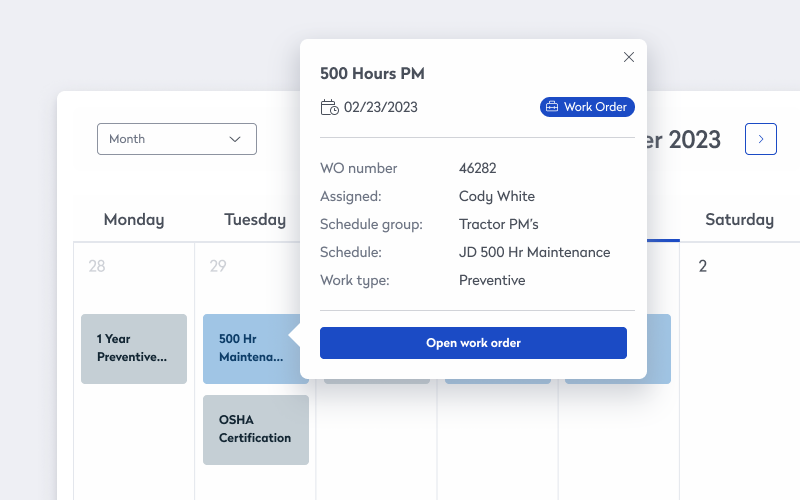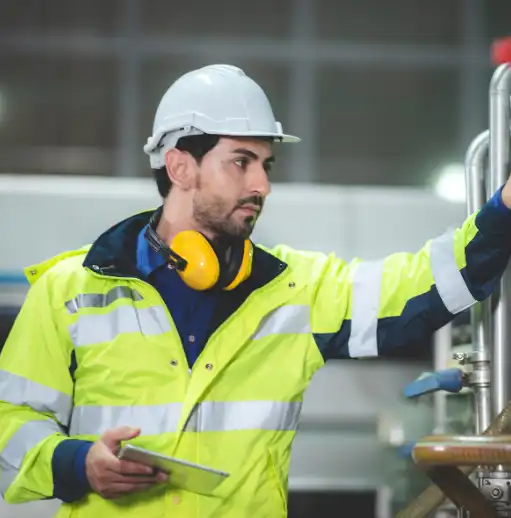
Facilities & Estates Management Live is a new event specifically for professionals managing the built environment. Taking place Oct. 7–8, at the Business Design Centre in London, the two-day conference and exhibition brings together the latest thinking, technologies, and trends shaping the future of facility and estates management.
Eptura is proud to be the registration and badge sponsor, and we’re excited about contributing to the conversation with a presentation on driving workplace outcomes through digital transformation.
Key takeaways
- The facility management industry is shifting towards smart buildings with automated, data-driven systems for climate control, lighting, and energy management, enabling real-time monitoring and proactive decision-making
- Changing work patterns and occupancy trends are driving the need for smarter space planning, using real-time data to optimize space utilization, reduce waste, and improve employee experience
- AI is transforming facility management through predictive maintenance, analyzing equipment performance, detecting anomalies, and forecasting potential failures, allowing for proactive strategies and reduced downtime
The event highlights how evolving workplace trends and advancing technologies are driving transformation. It’s not just about maintaining buildings anymore. Facility management is about shaping the future of work, optimizing operations, and leading strategic initiatives.
Along with industry-wide shifts, there’s also growth. Fortune Business Insights projects the global facility management market will grow from $1.315 trillion in 2024 to $2.284 trillion by 2032.
Collectively, current social, economic, and technological developments make it an exciting time in facility management, including for people thinking about entering the industry, those early in their careers, and experienced professionals.
Smart buildings are fast becoming the standard
Smart system use continues to accelerate, with the market projected to grow from $103 billion in 2024 to $828 billion by 2034. In many ways, the growth reflects a broader shift in how organizations manage their physical spaces, from manual oversight to automated, data-driven systems, including climate control, lighting, and energy management.
For facility managers, it means working in environments that are more connected, responsive, and efficient. Smart systems generate real-time data on, for example, occupancy, energy usage, and environmental conditions, allowing you to make informed decisions quickly.
Instead of relying on periodic inspections or manual reporting, for example, you can monitor building performance continuously and intervene proactively. Whether adjusting HVAC settings based on actual usage or identifying underutilized spaces, you’re empowered to optimize operations based on accurate data.
Making the trend even more exciting is the move toward cloud-based and cloud-to-cloud systems that enables remote access, centralized control, and seamless integration with other workplace technologies. You can manage multiple sites from a single dashboard, coordinate with IT and efficiency teams, and automate compliance reporting.
The result is a more agile, data-rich approach to facility management that reduces waste, improves comfort, and supports strategic goals across the organization.
New work models and occupancy trends are reshaping space planning
Who comes to the office, how often they’re there, and what motivates them to make the commute continues to evolve.
According to Eptura’s 2025 Workplace Index, desk bookings have grown 33% year over year, and the number of visitors per location has nearly doubled over the past three years. Those numbers are set to increase. The report also highlights that 34% of businesses plan to increase the number of in-office days.
Despite the growth, occupancy remains uneven, with most activity concentrated midweek, Tuesday through Thursday, creating a “midweek mountain” that adds complexity to staffing and resource allocation. Facility managers now need to coordinate across departments to maintain a productive and comfortable environment.
For facility managers, the shift opens the door to smarter, more responsive space planning. Rather than relying on assumptions or outdated floor plans, you can use real-time data to understand how people use spaces.
Booking systems, occupancy sensors, and modular furniture allow you to create environments that adapt to changing needs, whether that’s more collaboration zones, quiet areas, or touchdown spaces.
Especially exciting is how scalable and precise it’s become. Cloud-based platforms let you monitor usage across multiple sites, adjust layouts remotely, and forecast future needs based on historical trends. Facility managers are now in a unique position to reduce wasted space, lower energy costs, and align physical environments with evolving work styles.
Workforce transformation is changing facility management
As experienced professionals retire and younger workers enter the field with different expectations and skill sets, organizations are responding with a renewed focus on upskilling and automation, including integrating AI into daily operations, improving data analysis, and enhancing employee experience.
For facility managers, it means there are more opportunities to step into strategic roles, moving from maintaining buildings to leading digital change. In fact, three out of four professional services firms are hiring digital workplace leaders to guide this transition, according to the 2025 Workplace Index report.
To make the move successfully, though, you need to develop your leadership skills, especially around communication and collaboration.
Regulatory complexity is elevating the role of facility managers
As governments and industry bodies introduce stricter building performance regulations, facility managers are increasingly stepping into strategic roles. From energy benchmarking and emissions reporting to indoor air quality standards and accessibility compliance, the scope of responsibility is expanding.
Because of the direct connections between these regulations and funding, public perception, and long-term operational risk, facility managers are now expected to interpret policy, implement changes, and ensure ongoing compliance across diverse portfolios.
Smart building platforms now include automated compliance tracking, real-time monitoring, and built-in reporting tools, systems that can flag issues before they become violations, track key performance indicators, and generate audit-ready documentation.
For example, cloud-based dashboards can monitor energy usage against local mandates or alert teams when maintenance schedules fall out of sync with regulatory requirements, reducing manual oversight and helps facility teams stay ahead of evolving standards.
AI and predictive maintenance mean facility operations can be even more proactive
AI-backed maintenance helps teams shift from reactive fixes to proactive strategies. These systems continuously analyze equipment performance, detect anomalies, and forecast potential failures.
For facility managers, this means fewer surprises and more control. Predictive analytics makes it easier to schedule resources and forecast parts use, helping minimize downtime and reducing inventory costs.
Instead of scrambling to fix breakdowns, you’re scheduling maintenance work during low-impact windows, optimizing technician time, and improving service reliability.

It’s a shift that frees up bandwidth for strategic initiatives, like space optimization or energy efficiency, and positions FM teams as proactive problem-solvers rather than reactive responders.
Eptura at Facilities & Estates Managment Live: Drive more value from your facilities with intelligent data
Facilities & Estates is an opportunity to connect with peers, meet industry thought leaders, and learn more about the topics and technologies shaping the industry. We’re excited to be presenting at the event, contributing to the conversation by sharing insights from our 2025 Workplace Index report.
Driving Workplace Outcomes Through Digital Transformation
Oct. 7, 2–2:45 p.m.
Business Design Centre, London
Presenter: Phil Davitt, senior vice president, global professional services
Key takeaways:
- Practical strategies for connecting technologies to improve decision-making
- Insights from the 2025 Workplace Index on space optimization and rising occupancy
- How AI is transforming asset maintenance, visitor management, and employee experience
- What Gen Z’s workplace expectations mean for automation and system design
Facility managers are under increasing pressure to optimize space, reduce costs, and deliver a better employee experience, all while navigating fragmented data and rising office attendance. In this session, Phil Davitt shares findings from the 2025 Workplace Index, revealing how operational leaders are tackling these challenges through integrated worktech solutions and AI-driven automation.
Learn how digital transformation is reshaping buildings, assets, and employee experience—and why connecting technologies, not adding more, is the key to smarter decision-making.
The session also explores how Gen Z’s growing presence in the workforce is accelerating the shift toward automation, and how facility teams can respond with smarter, more connected systems.
Visit Eptura at Stand B1
Make sure to stop by Stand B1 to explore how intelligent data and connected systems can help you stay ahead. Whether you’re navigating hybrid work, planning smarter spaces, or preparing for the next wave of regulatory change, Eptura’s team will be on hand to talk through real-world strategies and tools that support better decisions and stronger outcomes.









